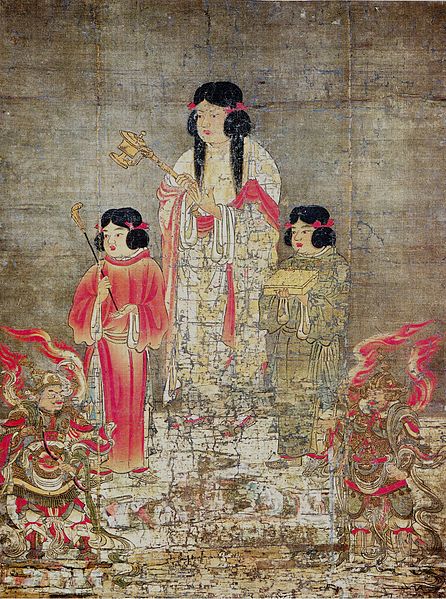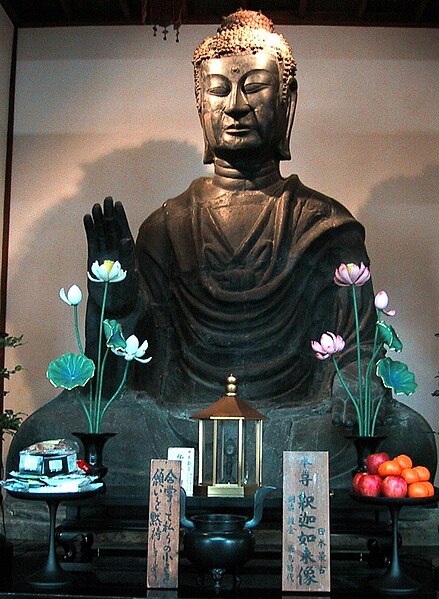Nichiren was a Japanese Buddhist priest and philosopher of the Kamakura period. His teachings form the basis of Nichiren Buddhism, a branch of Mahayana Buddhism.
Portrait from Kuon-ji Temple in Mount Minobu, Yamanashi prefecture, 15th century
The banishment of Nichiren in 1261. The disciple Nichirō wished to follow but was forbidden to do so. Tourist postcard artwork, circa 1920s.
Konpon Temple was built on Sado where Nichiren lived during his exile.
Nichiren bowing before the Mandala Gohonzon which he wrote by himself
Buddhism in Japan was first established in the 6th century CE. Most of the Japanese Buddhists belong to new schools of Buddhism which were established in the Kamakura period (1185-1333). During the Edo (Tokugawa)-period (1603–1868), Buddhism was controlled by the feudal Shogunate. The Meiji-period (1868–1912) saw a strong response against Buddhism, with persecution and a forced separation between Buddhism and Shinto.
The Great Buddha (Amida) (Daibutsu) at Kōtoku-in, Kamakura, in Kanagawa Prefecture, Japan (National Treasure)
Painting on silk of the semi-legendary Prince Shōtoku, first major sponsor of Buddhism in Japan
The Great Buddha of Asuka-dera, oldest Buddha statue in Japan, and an example of the Tori style
The Yumedono Kannon, another example of Tori style








